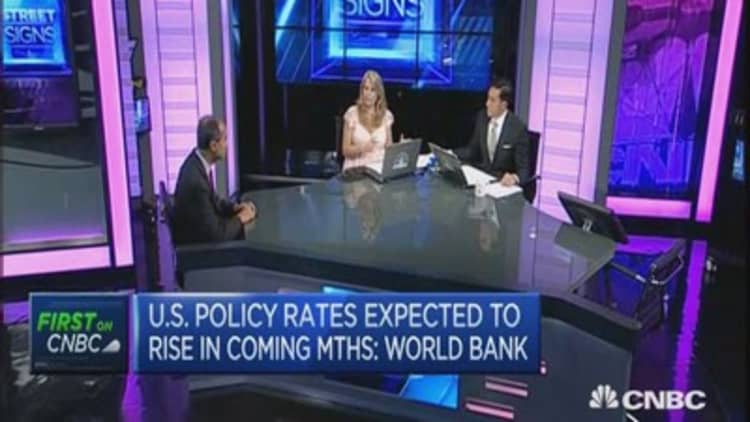
The slowdown in China, weaker commodity prices and the prospect of tighter external financing conditions are dimming the growth outlook for developing East Asia-Pacific, the World Bank warned, a region that has long been a bright spot in the world economy.
It downgraded its 2015, 2016 and 2017 growth projections for developing East Asia-Pacific to 6.5, 6.4 and 6.3 percent respectively on Monday. That's down from its previous prediction in April of 6.7 percent growth for both 2015 and 2016 and 6.6 percent in 2017, and the April predictions themselves were trimmed from a previous forecast.
Developing East Asia and Pacific, which grew 6.8 percent last year, comprises of 14 nations including China, Indonesia, Malaysia, Philippines, Thailand and Vietnam.
"Growth in developing East Asia and Pacific is expected to ease," the Washington-based lender wrote in its East Asia and Pacific Economic update report.
"China's economy will shift to a more balanced and sustainable growth path. In the rest of the region, growth conditions will depend on the exposure of countries to accelerating demand in high-income economies, gradually tightening external financing conditions, and still-subdued international commodity prices," it said.
The World Bank expects China to meet its annual gross domestic product (GDP) growth target of about 7 percent this year, with economic expansion set to moderate thereafter as investment growth decelerates on the back of tighter credit and more subdued property sector conditions.
It projects the world's second largest economy will grow 6.9 percent this year, before slowing to 6.7 percent and 6.5 percent in the following two years. This is down from its previous forecasts in April of 7.1, 7 and 6.9 percent growth respectively.
A greater-than-expected slowdown would have grave repercussions for the rest of the region given the countries' tight trade and financial links.
"The key trade effects would be mediated through developments in commodity prices, exports of non-commodity merchandise to China, and receipts from Chinese tourists. Financial spillovers would arise through a decline in outward FDI [foreign domestic investment] from China and an increase in volatility," the World Bank said.
Read MoreMyanmar expects 10% GDP growth for 2015: Adviser
Higher U.S. interest rates also pose a risk for the region as this could impact the cost and availability of external financing for the region, it said.
"There is a risk that the U.S. policy rate 'lift-off' will trigger abrupt market reactions, causing currencies to depreciate sharply, bond spreads to rise steeply, capital inflows to fall sharply, and liquidity to tighten, as occurred during the 2013 'taper tantrum'," according to the report.
Southeast Asian economies are expected to grow 4.3 percent in 2015, roughly stable from the previous year, before rising to 4.7 percent next year and 4.9 percent in the year after. However, the outlook is mixed.
Among the large Southeast Asian nations, growth conditions will be most buoyant in the Philippines and Vietnam, the World Bank said. The outlook was less optimistic for Indonesia, Malaysia and Thailand.
Weak global commodity prices continue to dim the prospects for business profits and household incomes in Indonesia and Malaysia. Meantime, in Thailand, political uncertainty is likely to weigh on private investment, while high levels of household debt will hurt private consumption.
Read MoreWorld Bank: South Asia needs to fix cities to get rich
For most of the smaller economies, such as Mongolia, Cambodia and Laos, growth will be stable or slower in 2015, before picking up again in the next two years, the World Bank said.
"Mongolia's adjustment to the end of the mining boom is expected to continue, with only moderate economic recovery on the back of weakening mineral exports and fiscal consolidation," it said.
"Weak agricultural output will weigh on GDP growth in Cambodia and especially Myanmar, following the severe monsoonal floods in July 2015. Growth in Lao PDR will remain buoyant, helped by new power projects, though trade and investment activity may be adversely affected by subdued economic conditions in neighboring Thailand," it added.


